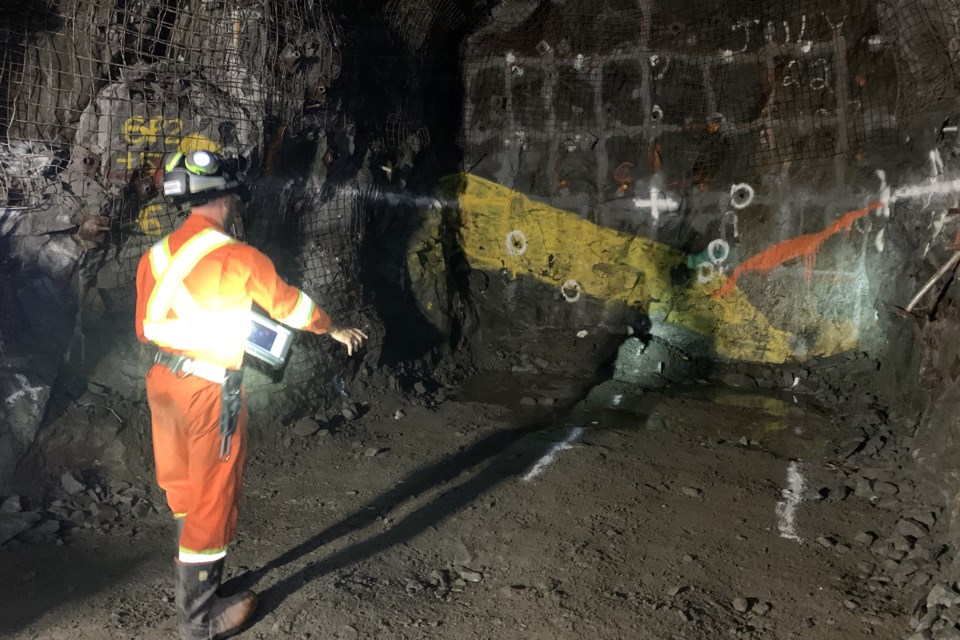Laurentian University scientists are working to make it safer for Northern Ontario miners and others who might have to work in high-temperature areas.
This has become more of an issue as climate change is expected to affect the number of workplaces where a warmer environment can put some workers at risk.
One of the people involved in the research is Dr. Sandra Dorman, the director of the Centre for Research in Occupational Safety and Health (CROSH) at LU.
She was one of several speakers taking part in the online safety conference hosted recently by CROSH.
Dorman said the concern is that the core temperature of a worker can quickly rise depending on the level of physical labour being done and the level of the ambient temperature in the workplace. She said she is in favour of developing and using wearable technology that measures body temperature, because it can keep people healthy and functioning in high-risk jobs. Dorman mentioned underground miners and smelter workers as examples. But she said even teachers stuck in a hot classroom could be at risk.
"Most of the emphasis is put on heat stroke, right, which is, when you've got a sliding scale of heat accumulation in a worker, you can imagine, in a hot workplace, whether it's from outdoor exposure or process heat, the body is slowly getting warmer and warmer, right?"
Dorman said that is affected by how quickly someone can dissipate the heat, how much clothing and protective equipment they're wearing and other factors such as the humidity of the workplace, such as in a mine, which can slow one's ability to sweat .
"If you're doing a lot of physical activity, you're generating your own internal heat. So there's a lot of things that are creating heat in the system," said Dorman.
She said research has already been done to map the amount of work an individual can do within certain workplace temperature ranges. The normal core body temperature for a healthy person is 37 C.
"Because physical work makes your heart beat faster, and temperature makes your heart beat faster, you have to take both of those things into consideration to try and set a safe level for people," she said.
"As the physical activity gets higher, or as the temperature gets higher, then you have to start increasing your rest cycle to have more rest time," said Dorman.
She said with 37C as the norm, the goal is to keep one's core temperature below 38C. She said a rising core temperature of 38C or more is not healthy
"At that point, your decision-making ability has declined. And that's partly because we're getting less oxygen to the brain. And certainly, as we continue along this path of more and more heat strain and our body temperature goes up, our heart works even harder. And eventually, we can go into full blown heat exhaustion, and then heat stroke," said Dorman.
"And if that happens, you've absolutely caused some kind of neurological or brain damage, you've also caused some level of kidney damage."
Dorman added that anyone who faints or passes out from the heat develops a heat intolerance condition, that makes it difficult for them to return to the same type of work as they could develop the symptoms of heat exhaustion more quickly and more frequently. She said this is also affected by the level of a person's fitness, their health and whether they have taken medication that day. She asked the webinar, how many of your coworkers are always fit, always healthy and never take medication.
Dorman said it all points to the importance of having a way to monitor the accumulated heat that a worker is experiencing.
She said one of the studies done by CROSH measured the skin temperature, which was usually just below 37C, while the core temperature of a miner was revealed to be 37.9C. She said this was done in part by using an algorithm along with devices attached to the head and on a wristwatch device.
Dorman said there is wearable technology that miners can use that will warn when their body temperature is rising, along with other factors such as the ambient heat in the workplace, along with the level of intense labour a person would be doing.
She also mentioned there is a device worn on the chest, which is more accurate than the wristwatch, and there is also a fabric embedded with electrical sensors that can measure temperature changes.
Dorman said that in the past 10 years as people become more aware of increasing temperatures, the attitude has changed with respect to the willingness of people to wear devices to help them monitor heat in the workplace. She said a majority of people would accept it.
She added however that not everyone is keen on wearable technology because they fear it might encroach on their privacy in the workplace, while others wonder if it might affect job security. Some workers are not comfortable with the hygiene level of some wearable devices, while others just do not trust the technology.



